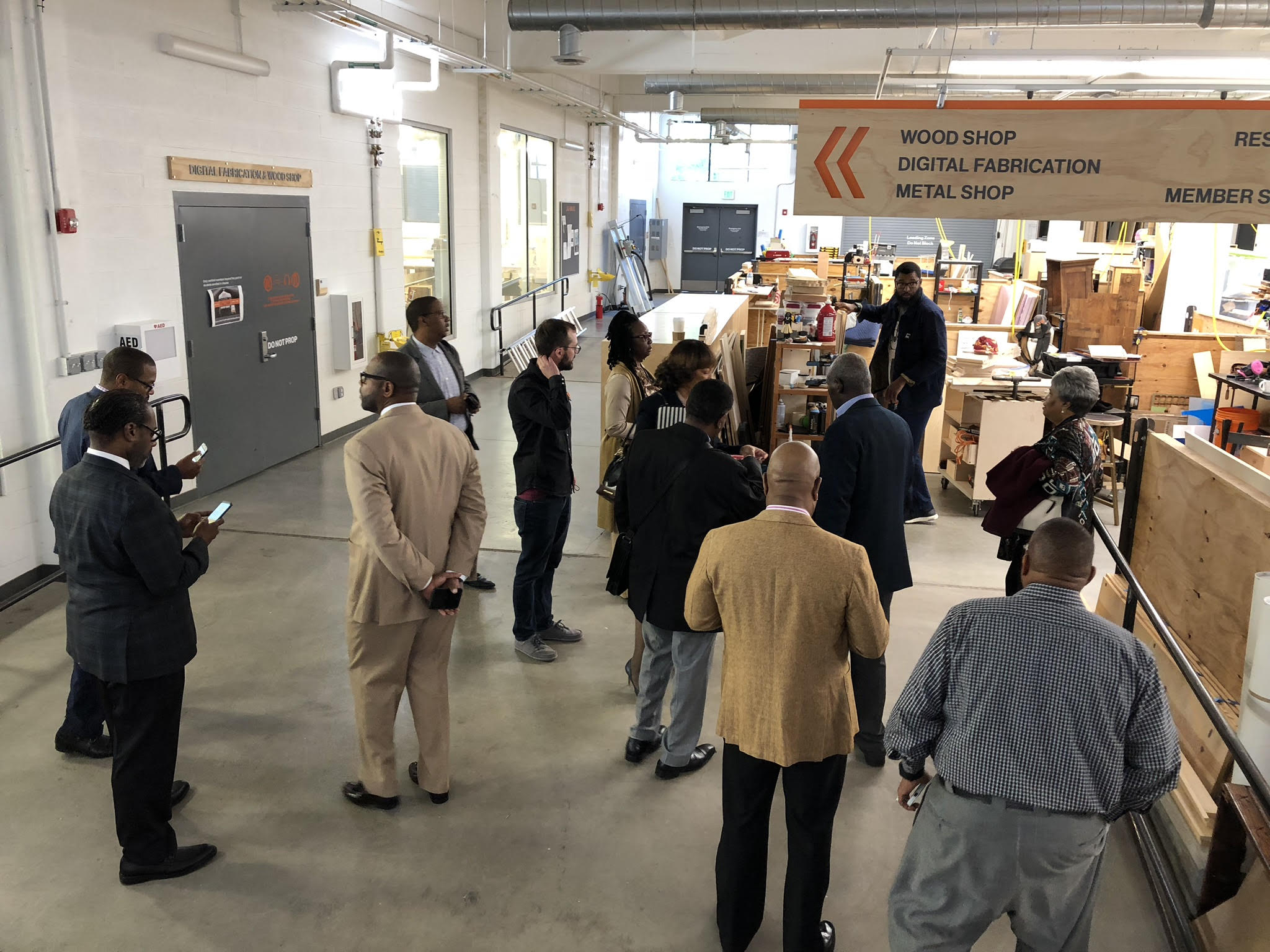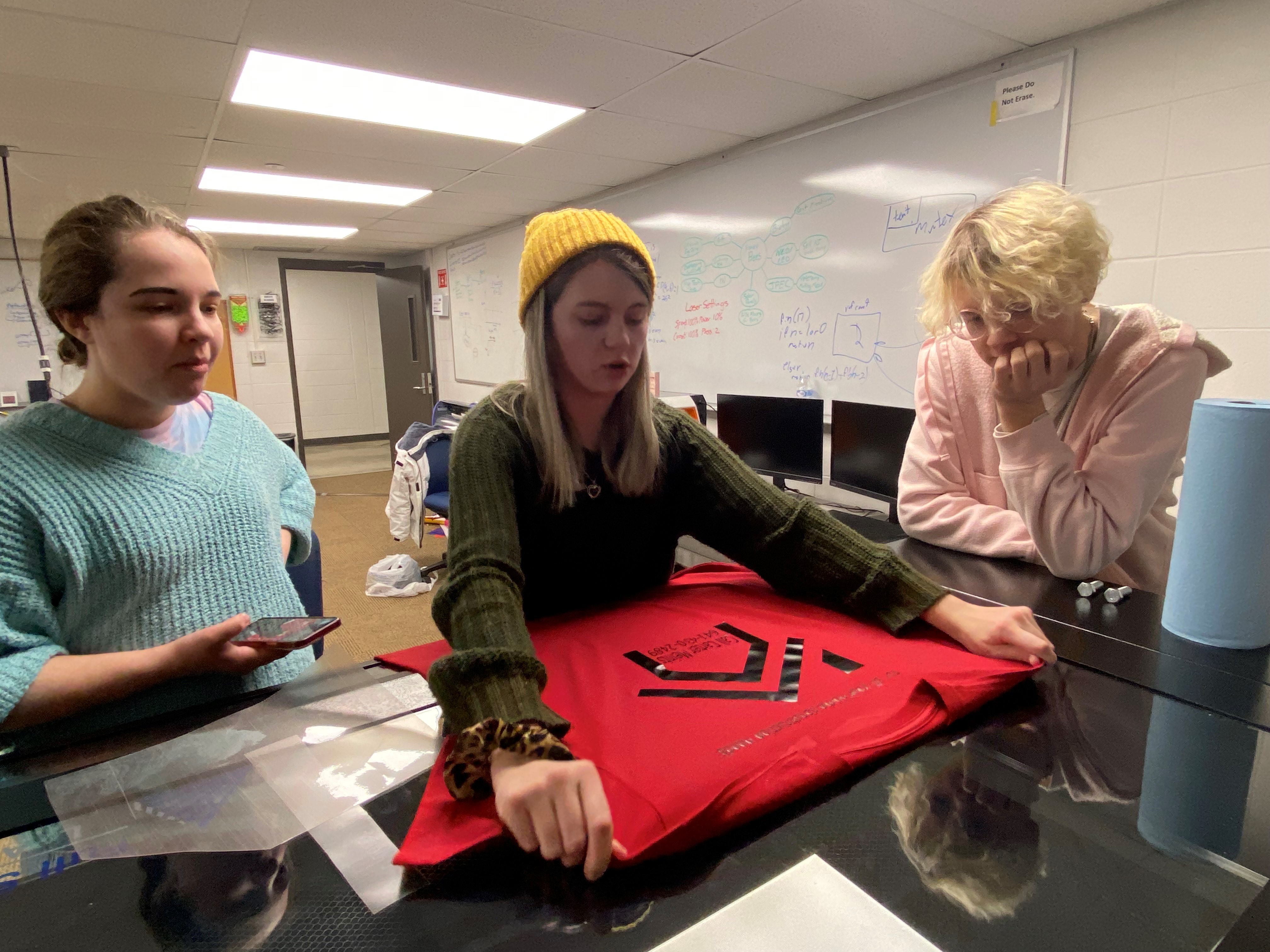Supporting Community-Led Innovation & Social Mobility through MakerUSA
Posted by Dr. Stephanie Santoso & Colin Lacy

leaders on a tour of Open Works.
In Baltimore, MD, Coppin State University students and faculty are partnering with a community-embedded makerspace to demonstrate the social and economic impact of making, entrepreneurship, and community engagement. The collaboration is with Open Works, a 34,000 square foot nonprofit makerspace. The relationship between Coppin University and Open Works was the first partnership between an HBCU and community makerspace in the country. More broadly, the long-term partnership between Coppin University, Open Works and local funders has created more equitable educational opportunities and supported economic development throughout the vibrant West Baltimore community.
In Mason City, IA, North Iowa Area Community College’s (NIACC) Innovation Workspace is quickly becoming a place where students are prototyping new product ideas and solutions, working on their passion projects and further developing career-relevant skills, whether they’re pursuing a career in business, graphic design or information technology. Students are building community by sharing ideas and working together on projects. One student is designing a login system for the Workspace using what he’s learned in a Javascript class while other students have been helping entrepreneurs with 3D modeling. Finding a home on campus and having a sense of belonging can play a critical role in student retention.

Innovation Workspace collaborate on a project.
These are just two powerful examples of the incredible work that higher education institutions, organizations and individuals are leading in building stronger pathways for students into making-related careers and entrepreneurship. These opportunities are critical to ensuring individual social mobility and economic agency. Collectively, these models grow a community’s ability to engage in community-led innovation and problem solving.
The critical need around
maker-centered learning and entrepreneurship
However, we know that current conditions and a variety of systemic barriers are preventing all students from having access to these kinds of opportunities. Throughout the 20 combined years we have worked at the intersection of maker-centered learning, educational equity and innovation, we have witnessed this first hand. Low-income children will have had 6,000 less hours of academic enrichment than their middle and upper income peers by the time they reach 8th grade. Students from the upper 20 percent in parental wealth that perform below average in math are still more likely to become inventors (i.e. patent holders) than students who were in the bottom 20 percent in parental income but perform above average math. Parental wealth is more important than interest and skill in determining who becomes an inventor. These are just a few of the many indicators of inequity.
Human talent and capacity to address the need
To address these challenges, we have consistently heard from communities that human talent and capacity are urgently needed to seed new programs, refine and scale proven models and develop local ecosystems that ensure equitable access and long-term sustainability. Many colleges and universities are investing in makerspaces and other maker programs for their students to develop their own ideas and solutions, but we also know there is often limited human capacity and expertise to grow these programs and to support individual students in connecting with local businesses or entrepreneurship resources.
We are proud to share that NACCE is incubating our new organization, MakerUSA, which will help communities build stronger pathways for underserved students into making-related careers and entrepreneurship. Making-related careers can include industries from advanced manufacturing and computer science to alternative energy and the skilled trades. The MakerUSA model will place full-time, uniquely-trained, well-supported Program Managers at “Innovation Sites.” An Innovation Site could be a college or university, local makerspace, public housing authority or workforce development program.
Learn More and Next Steps
If you are interested in serving as an Innovation Site, we encourage you to learn more about MakerUSA here. We will also be hosting two information sessions over the next several weeks where you’ll have the opportunity to learn more details about how the model can support your efforts and ask any questions you might have. If you are unable to attend the information sessions, but would like to connect with a member of the MakerUSA team, please reach out at info@makerusa.org.
MakerUSA Information Session March 17th
|
MakerUSA Information Session April 27th
|
| Registration Link | Registration Link |
“Letter of Interest” Submissions
We are currently accepting Letters of Interest from potential Innovation Sites, with the goal of launching the first cohort of MakerUSA Program Managers in late 2022. Even if you aren’t positioned to participate in the first cohort, submitting a Letter of Interest now will ensure your institution is prioritized as the model begins to scale in 2023 and beyond. Submitting a Letter of Interest is a simple process that should take approximately 10 minutes to complete online through this form.
 |
 |
